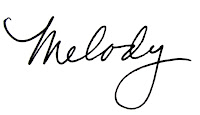 When we fuse a small work it helps to start with an idea of the finished size. Then the pieces we use will be to scale.
When we fuse a small work it helps to start with an idea of the finished size. Then the pieces we use will be to scale. 1. Cut your batting to size, for example 13x15" OR 14"
square, or whatever you like. Just keep it small.
I am using a Hobbs 80/20 cotton/poly batting, (not Warm and Natural or White and Natural, both of which will curl up when fused).
Use the release paper from the Wonder-Under, and draw the finished size on the paper with a pencil. We will assemble the top on the paper, and after it is completed it will then be fused onto the batting.
The reason we have drawn the size on the paper is to help place the pieces within the space. This is especially helpful when cutting the background pieces.

The tools used are rotary cutter, sharp scissors and a sliver of soap which is used to mark the front of the fabric, and the mark disappears with pressing.
If you are beginning with large pieces of fabric it is often daunting to cut into them, so I suggest cutting off a three inch piece from each color. You may still have to cut into the large pieces but you will have some small pieces to cut into details.
I am using chunks of leftovers and some are already missing large parts, but no matter, I just put another piece in the missing space and it looks like I layered it over a full piece.
But the deceptive truth is that everything that is on top is covering an empty space.

The turquoise piece on the left shows that missing part. I used the sliver of soap to outline the part covered with the orange piece, and then I trimmed away the turquoise piece. It fits under the orange now with only a small bit connecting the two.
 I am not suggesting any of the dimensions of these pieces, as you will be making those choices yourself. Just keep it simple and it will all work out just fine. Really.
I am not suggesting any of the dimensions of these pieces, as you will be making those choices yourself. Just keep it simple and it will all work out just fine. Really.I keep adding more chunks of fabric, building up the composition.
Nothing is fused down YET. I am still arranging and judging how it looks. This is where the 'designing' comes in. I am just looking for a pleasing arrangement, with colors that look good together.
There will be some trimming and neatening of edges before I do the fusing. Keep in mind that all of these fabrics are fused and cut without paper on the back.
Nothing has been measured or is perfectly square.
Let go of perfection for this project.
The composition is nearing completion, and I am adding the larger chunks to fill in the background spaces. It really helps me to know where the outer edges are, so I can work in the fabric were it fits. Some gaps occured and that provided 'design choices' such as that horizontal turquoise piece on the right.
I have begun adding thin lines on top and underneath the pieces to ground the composition. I really dislike floating objects. The shapes need to relate to each other and the outside edges as well. At this point I have LIGHTLY fused all the pieces to each other, and onto the paper. I use a tweezer to lift some edges to insert the thin line pieces under the top layer.
 The finished top, fused onto the batting and trimmed to size.
The finished top, fused onto the batting and trimmed to size. I've added a few more lines, some dots and triangles and stopped myself from overdoing it. I will rely on the machine quilting to add the right finish.
IF I were going to do any hand stitching, now is the time to do it. I would stitch through the top and batting with either embroidery floss or perle cotton size 8 or 12. Then later after the backing is sewn on, the machine quilting will be done.
Tomorrow, the backing will be pillowcased and the quilting will begin.
Keep in mind that trimming each piece of fabric before the final fusing helps keep the look of the design neat and clean.








Wow! This looks like fun! I hadn't planned on trying this, but I think I may need to set aside some time. Your design is fabulous, not to mention your colors!
ReplyDeleteI can hardly wait to get going! Must be at work today, but just wait until tomorrow!
ReplyDeleteI have already learned so much and it's the first lesson!!
ReplyDeleteHello Melody
ReplyDeleteYou are a great inspiration!!! Thank you, Thank you.
Dee
I'm following along but can't touch fabric until Friday (gee...that makes it sound like I have a disease or something...sorry). I love what you do!
ReplyDeleteThis is so timely! I'm teaching a group of elementary kids at the end of the month. I think this technique is perfect (expect I will do the ironing).
ReplyDeleteThank you for showing your process. I like the strong colors of your pieces. Also liked your tip of fusing the back shut after you turned the sandwich. Clever!
ReplyDeleteHello Melody, I am following your blog with much interest already for some time. I like your colours and found now your "tutorial" - and I want to thank you so much for describing the "how-to", especially on this post. I like the modern aspect of your quilts.
ReplyDelete